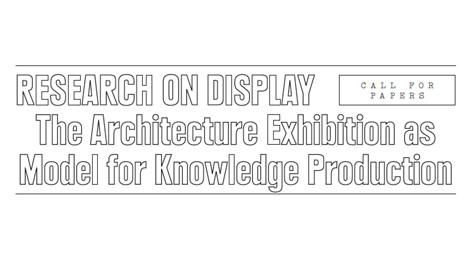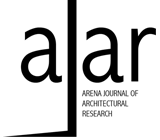
Research on Display 2015-Nov-30-Dec-1
Second Annual Conference of the Jaap Bakema Study Centre
30 November – 1 December 2015
Faculty of Architecture and the Built Environment,
TU Delft and Het Nieuwe Instituut, Rotterdam
We now recognize the architecture exhibition as a medium of its own, including its own history. It cannot therefore be treated as a neutral vehicle for the presentation of best practices, the dissemination of innovative ideas, or for the propagation of a singular architectural style or ideology. Exhibitions have a power to frame architectural discourse by exploring the larger cultural conditions that shape the discipline. In the same way as a world’s fair communicates a global condition, an exhibition of architectural drawings communicates the existence of archives and their institutional memory, while a model interior of a house conveys that the private, everyday realm also belongs to the sphere of culture and its politics.
Architecture exhibitions come in many variants, as we know. A dominant exhibition format has tended to showcase the latest developments of masterpiece architecture to a larger audience, as was the case with the now iconic Modern Architecture: International Exhibition at New York’s Museum of Modern Art in 1932, which launched the International Style. Other formats such as biennials stage debates on the state of architecture in relation to urgent societal or urban issues, e.g. The Greater Number at the Milan Triennale in 1968 curated by Giancarlo De Carlo.
Last year’s Venice Biennale entitled Fundamentals, curated by Rem Koolhaas, proposed another kind of format that dominated the various presentations: the exhibition as a platform for the presentation of research. From Beatriz Colomina’s Radical Pedagogies to the Korean pavilion by Minsuk Cho of Mass Studies that won the Golden Lion, the exhibition was not simply a product of research: research itself was on display.
For its second annual conference, The Jaap Bakema Study Centre, in collaboration with TU Delft and Het Nieuwe Instituut, wants to look closer into this relationship between research and the exhibition medium. We are interested in contributions that bring to the conference a wide variety of perspectives, both historical and theoretical in nature, and which address, but are not limited to the following questions.
Formats and Typologies
Which formats and typologies of display can play a key role in establishing a profound relationship between exhibition and research? Where and who is the audience, and what is its role within the exhibition as a site of knowledge production? What are the classical and innovative narratives, what are the successful formats? What sort of exhibition design is involved? From installations and 1:1 models to chronologies, from archive presentations to 3D-animations.
Archives and Knowledge Production
Exhibitions often combine original sources such as historical drawings, photographs and models, with new materials that are especially produced for the exhibition. If the exhibition is a site of knowledge production, what is the relation between original sources and newly produced material? What kind of objects and materials are put on display? What is the role of institutional archives and private collections when making an exhibition? What sort of products are the specially produced materials in terms of didactics, analysis, mapping, documentation, survey, data-mining, synthesis, or even propaganda? How are the different modes and standards of ‘research’ (e.g. scholarly research, design research) compatible with the exhibition format?
Analysis and Speculation
Exhibitions as platforms of research seem to hold the capacity to alternate between analysis and speculation. How can exhibitions combine the accumulation of historical experience in the archive with speculations about the future? Does the exhibition as a site of knowledge production play a special role in relating historical and archival research to contemporary questions of architecture and urban planning? And finally, what does turning an exhibition into a platform for research tell us about the state of the discipline and where it is heading?
Abstracts of 300-500 words plus a short bio (300 words max) should be sent to
Dirk van den Heuvel: d.vandenheuvel@tudelft.nl
Dates
Deadline: Monday 31 August 2015
Notification of selection: Monday 14 September 2015
Dates of the conference: 30 November – 1 December 2015
Organizing Committee
Dirk van den Heuvel (Jaap Bakema Study Centre)
Tom Avermaete (TU Delft)
Eeva-Liisa Pelkonen (Yale University)
Guus Beumer (Het Nieuwe Instituut, Rotterdam)
Dick van Gameren (TU Delft)

